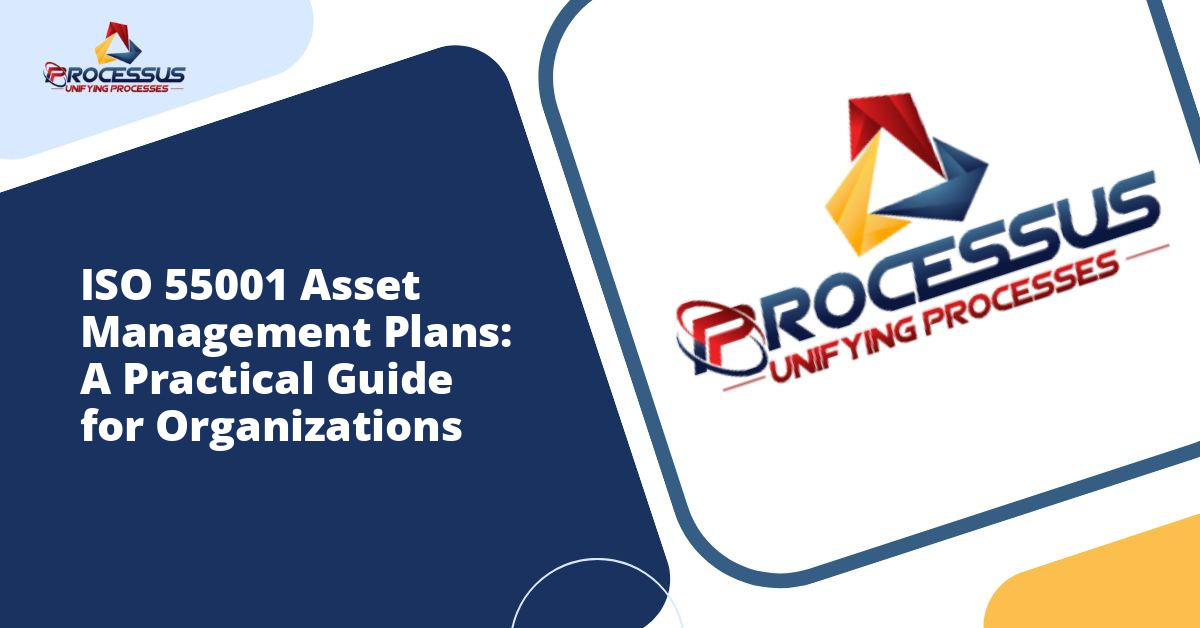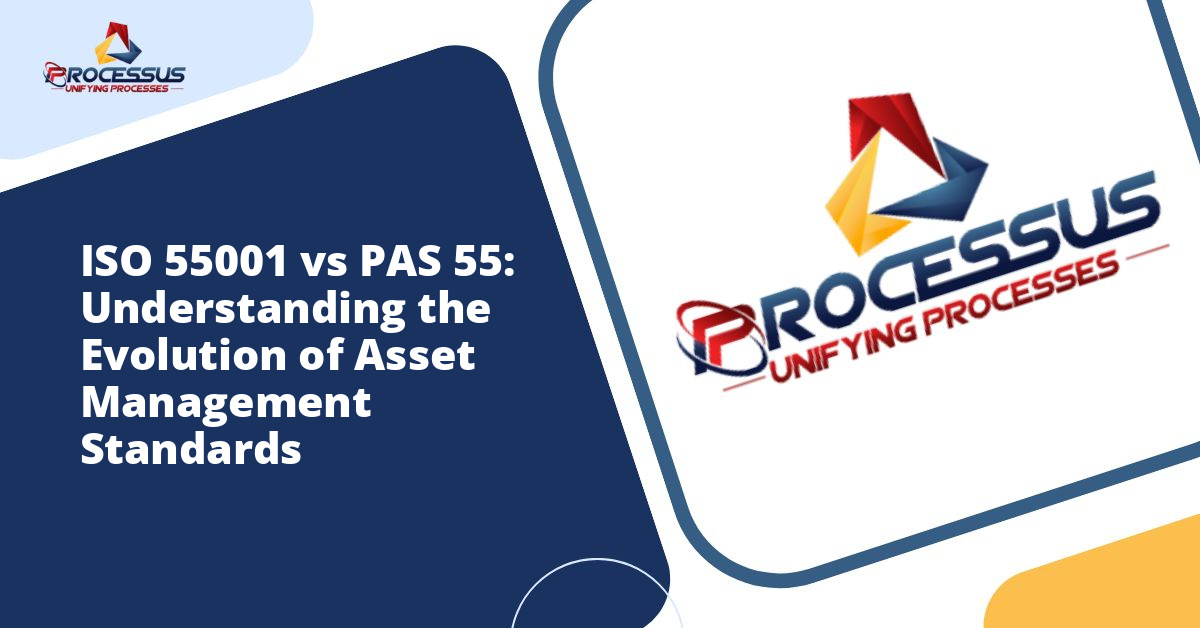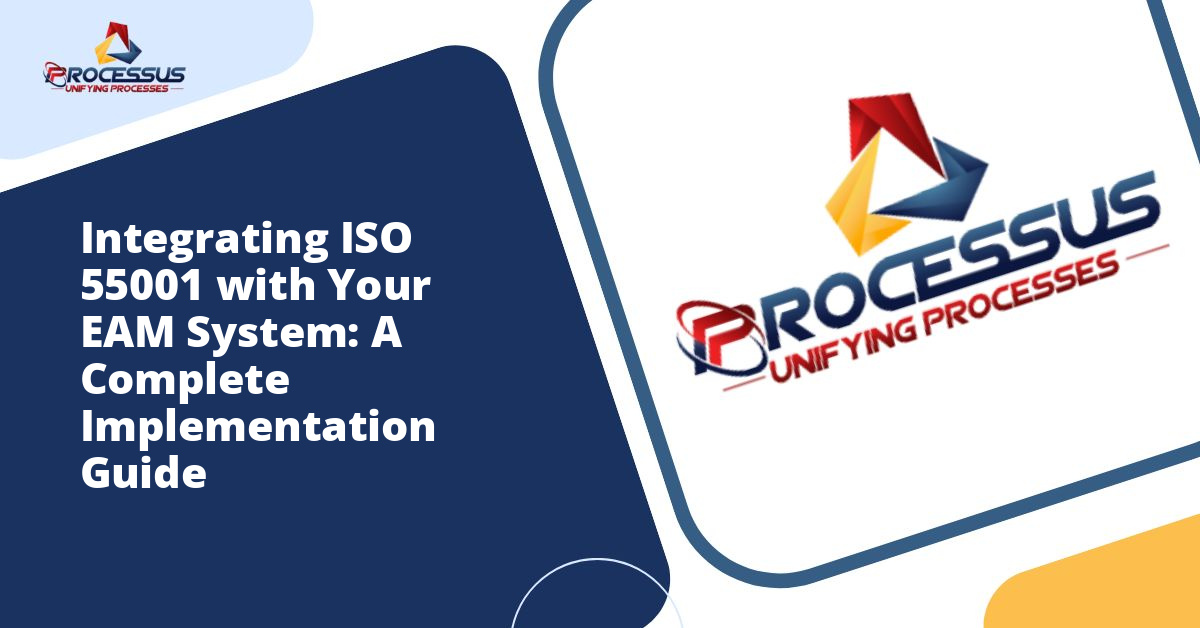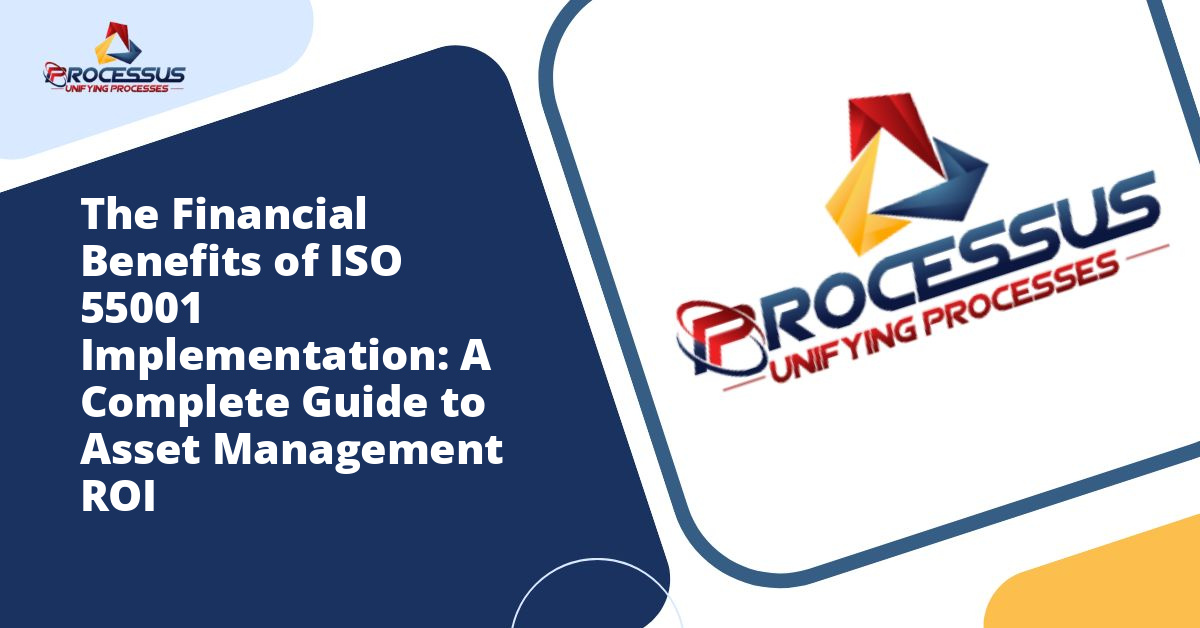In today’s competitive business environment, organizations across all sectors are recognizing that their assets represent significant value and potential. However, managing these assets effectively requires more than just basic maintenance schedules and replacement programs. This is where ISO 55001, the international standard for asset management, comes into play. This comprehensive guide will walk you through the essentials of creating and implementing ISO 55001-compliant asset management plans that can transform your organization’s approach to managing its valuable resources.
Understanding ISO 55001 and Its Importance
ISO 55001 is an internationally recognized standard that provides a framework for establishing, implementing, maintaining, and improving an asset management system. Published in 2014 by the International Organization for Standardization, this standard has become the gold standard for organizations seeking to optimize their asset lifecycle management practices. You might also enjoy reading about Maximising Asset Lifecycle Value with ISO 55001: A Comprehensive Guide to Strategic Asset Management.
The standard applies to all types of assets, whether physical, human, information, or financial. It helps organizations of any size and sector to manage their assets more effectively, ensuring they deliver value while balancing cost, risk, and performance. The beauty of ISO 55001 lies in its flexibility and applicability across diverse industries, from manufacturing and utilities to healthcare and transportation. You might also enjoy reading about ISO 55001 for Utilities: Transforming Water and Energy Sector Asset Management.
Organizations that implement ISO 55001 benefit from improved asset performance, better risk management, enhanced decision-making processes, and increased stakeholder confidence. The standard also promotes a systematic approach to managing assets throughout their entire lifecycle, from acquisition and operation to disposal. You might also enjoy reading about The Financial Benefits of ISO 55001 Implementation: A Complete Guide to Asset Management ROI.
Core Components of an Asset Management Plan
An asset management plan serves as the roadmap for achieving your organization’s asset management objectives. It translates the strategic asset management policy into detailed actions and initiatives. Understanding its core components is essential for developing an effective plan that aligns with ISO 55001 requirements.
Strategic Context and Organizational Alignment
Every asset management plan must begin with a clear understanding of the organizational context. This involves identifying internal and external factors that affect asset management, including stakeholder requirements, regulatory obligations, and business objectives. Your plan should demonstrate how asset management activities support broader organizational goals and create value for stakeholders.
The strategic context section should address questions such as what outcomes the organization expects from its assets, how these align with corporate strategy, and what constraints or opportunities exist in the operating environment. This alignment ensures that asset management decisions contribute directly to organizational success rather than operating in isolation.
Asset Management Objectives and Performance Metrics
Setting clear, measurable objectives is fundamental to any ISO 55001-compliant asset management plan. These objectives should be specific, measurable, achievable, relevant, and time-bound. They might include targets for asset reliability, availability, efficiency, safety, environmental performance, or cost optimization.
Performance metrics and key performance indicators provide the means to track progress toward these objectives. Effective metrics go beyond simple availability statistics to encompass lifecycle costs, risk exposure, sustainability indicators, and value delivery measures. The plan should specify how performance will be monitored, analyzed, and reported to relevant stakeholders.
Asset Portfolio and Lifecycle Management
A comprehensive asset management plan includes a detailed inventory of the asset portfolio, categorized by type, criticality, and function. This inventory forms the foundation for lifecycle management strategies that address each phase of an asset’s existence.
Lifecycle management encompasses acquisition planning, design and commissioning, operation and maintenance, performance monitoring, and eventual disposal or replacement. Your plan should outline specific strategies for each lifecycle phase, considering factors such as whole-life costs, performance requirements, risk profiles, and sustainability considerations.
Developing Your Asset Management Plan
Creating an effective asset management plan requires systematic effort and cross-functional collaboration. The development process itself is as important as the final document, as it builds organizational understanding and commitment.
Conducting a Gap Analysis
Before developing your plan, assess your current asset management practices against ISO 55001 requirements. This gap analysis identifies strengths to build upon and weaknesses that need addressing. It should examine organizational structure, processes, information systems, competencies, and culture.
The gap analysis provides valuable insights into resource requirements, implementation priorities, and potential obstacles. It also helps establish a baseline for measuring improvement over time. Engage stakeholders from across the organization in this assessment to gain diverse perspectives and build buy-in for subsequent changes.
Defining Roles and Responsibilities
Clear accountability is essential for successful asset management. Your plan should specify who is responsible for various asset management activities, from strategic decision-making to day-to-day operations. This includes defining the role of senior leadership in providing direction and resources, as well as the responsibilities of asset managers, operators, maintenance personnel, and support functions.
Consider establishing an asset management steering committee or governance body to oversee implementation and ensure ongoing alignment with organizational objectives. Document reporting relationships, decision-making authorities, and coordination mechanisms to avoid confusion and ensure accountability.
Resource Planning and Allocation
Effective asset management requires adequate resources, including people, funding, technology, and information. Your plan should identify resource requirements for implementing and maintaining the asset management system, as well as strategies for securing and allocating these resources.
This includes workforce planning to ensure sufficient competent personnel, budget allocation for maintenance and capital investments, technology infrastructure for asset information management, and systems for capturing and sharing knowledge. Be realistic about resource constraints while making a compelling case for necessary investments.
Risk Management in Asset Management Plans
Risk management is integral to ISO 55001 and must be embedded throughout your asset management plan. This involves identifying potential risks to asset performance and value delivery, assessing their likelihood and impact, and implementing appropriate mitigation strategies.
Risk Assessment Methodologies
Your plan should outline the methodologies used for risk assessment, whether qualitative, quantitative, or hybrid approaches. Common techniques include failure mode and effects analysis, fault tree analysis, risk matrices, and Monte Carlo simulation. The chosen methodology should be appropriate to the complexity and criticality of your assets.
Risk assessment should consider various categories including operational risks, financial risks, safety and health risks, environmental risks, reputational risks, and compliance risks. It should also account for both current conditions and future uncertainties, including changing regulatory requirements, technological obsolescence, and climate change impacts.
Risk Treatment and Mitigation
For each identified risk, your plan should specify treatment strategies. These might include risk avoidance through design or operational changes, risk reduction through preventive measures, risk transfer through insurance or contracts, or risk acceptance when costs of mitigation exceed potential impacts.
Document contingency plans for high-impact scenarios and establish monitoring systems to detect early warning signs of emerging risks. Regular review and update of risk assessments ensures they remain relevant as circumstances change.
Implementation Strategies for Success
Having a well-crafted plan is only the beginning. Successful implementation requires careful planning, effective communication, and sustained commitment from all levels of the organization.
Phased Implementation Approach
Rather than attempting to implement everything simultaneously, consider a phased approach that prioritizes high-value or high-risk assets. This allows the organization to build capability progressively, learn from early experiences, and demonstrate value before expanding to other asset categories.
Each phase should have clear milestones, deliverables, and success criteria. This structured approach makes implementation more manageable and provides opportunities to celebrate achievements along the way, maintaining momentum and enthusiasm.
Change Management and Stakeholder Engagement
Implementing ISO 55001 often requires significant changes to organizational culture, processes, and systems. Effective change management is critical to overcoming resistance and securing lasting adoption of new practices.
Engage stakeholders early and often, communicating the vision, benefits, and expectations clearly. Provide training and support to help people develop necessary competencies. Create champions at various organizational levels who can advocate for asset management and support their colleagues through the transition.
Address concerns openly and adapt your approach based on feedback. Remember that people are more likely to support changes they help shape, so involve them in problem-solving and decision-making where possible.
Technology and Information Management
Modern asset management relies heavily on information systems to capture, store, analyze, and share asset data. Your implementation strategy should address technology requirements, including computerized maintenance management systems, enterprise asset management platforms, condition monitoring systems, and analytics tools.
Ensure data quality through standardized collection methods, validation processes, and governance protocols. Establish integration between different systems to provide a unified view of asset information and enable informed decision-making.
Monitoring, Review, and Continuous Improvement
ISO 55001 emphasizes the importance of monitoring performance and continuously improving the asset management system. Your plan should establish mechanisms for regular review and enhancement.
Performance Monitoring and Reporting
Implement systems to track performance against objectives and key performance indicators. This includes operational metrics such as reliability and availability, financial metrics such as lifecycle costs and return on assets, and strategic metrics that measure contribution to organizational objectives.
Establish reporting frequencies and formats appropriate to different audiences. Senior leadership may require high-level dashboards showing strategic performance, while operational teams need detailed metrics to guide day-to-day decisions. Ensure reports are timely, accurate, and actionable.
Internal Audits and Management Reviews
Regular internal audits verify compliance with ISO 55001 requirements and identify opportunities for improvement. These audits should be conducted by competent, objective personnel using systematic protocols. Audit findings should be documented, shared with relevant stakeholders, and addressed through corrective actions.
Management reviews, typically conducted annually, provide a formal opportunity to assess the overall effectiveness of the asset management system. These reviews should consider audit results, performance data, stakeholder feedback, changes in context, and opportunities for improvement. They should result in decisions about resource allocation, strategic direction, and improvement initiatives.
Continuous Improvement Culture
Beyond formal review processes, foster a culture where continuous improvement is everyone’s responsibility. Encourage people to identify problems, suggest solutions, and share lessons learned. Implement mechanisms for capturing and acting on improvement ideas, such as suggestion schemes or kaizen events.
Celebrate improvements and recognize contributors to reinforce desired behaviors. Over time, this culture of continuous improvement becomes embedded in how the organization operates, driving ongoing enhancement of asset management practices.
Common Challenges and How to Overcome Them
Implementing ISO 55001 asset management plans is not without challenges. Being aware of common obstacles and strategies to address them can improve your chances of success.
Securing Leadership Commitment
Without visible support from senior leadership, asset management initiatives often struggle to gain traction. Leaders may not fully appreciate the value of systematic asset management or may be reluctant to commit necessary resources.
Address this by clearly articulating the business case for asset management, including quantified benefits such as reduced downtime, lower lifecycle costs, improved safety, and enhanced regulatory compliance. Present case studies from similar organizations and provide regular updates on progress and achievements to maintain leadership engagement.
Breaking Down Organizational Silos
Effective asset management requires collaboration across functions that may traditionally operate independently. Engineering, operations, maintenance, finance, and procurement must work together seamlessly.
Break down silos by establishing cross-functional teams, creating shared objectives that require collaboration, and implementing integrated systems that promote information sharing. Make collaboration a leadership expectation and recognize examples of effective cross-functional teamwork.
Managing Data Quality and Availability
Many organizations struggle with incomplete, inaccurate, or inaccessible asset data. Poor data quality undermines decision-making and erodes confidence in the asset management system.
Address data challenges through systematic data governance, including clear ownership, standardized collection methods, validation processes, and regular audits. Start with critical assets and essential data elements, progressively expanding coverage. Invest in user-friendly systems that make data entry and retrieval straightforward.
The Business Value of ISO 55001 Compliance
While implementing ISO 55001 requires effort and resources, the return on investment can be substantial. Organizations that effectively implement the standard report numerous benefits that extend well beyond improved asset reliability.
Financial benefits include reduced maintenance costs through optimized strategies, lower capital expenditure through extended asset life, decreased downtime and associated revenue losses, and improved asset utilization. Many organizations also experience reduced insurance premiums and improved access to financing due to demonstrated risk management capabilities.
Operational benefits encompass improved asset reliability and availability, better safety performance, reduced environmental incidents, and enhanced regulatory compliance. The systematic approach promoted by ISO 55001 also leads to more consistent, predictable asset performance.
Strategic benefits include better alignment between asset management and organizational objectives, improved stakeholder confidence, enhanced corporate reputation, and increased organizational resilience. The framework also provides a foundation for innovation in asset management practices.
Conclusion
ISO 55001 provides a powerful framework for organizations seeking to optimize their asset management practices and realize maximum value from their asset portfolios. Developing and implementing an effective asset management plan requires commitment, collaboration, and persistence, but the rewards justify the effort.
By following the guidance outlined in this practical guide, organizations can create asset management plans that meet ISO 55001 requirements while addressing their unique needs and circumstances. Remember that asset management is a journey, not a destination. Start with a solid foundation, implement systematically, monitor performance diligently, and continuously improve your practices.
The organizations that thrive in the coming decades will be those that manage their assets strategically, using frameworks like ISO 55001 to drive excellence. Whether you are just beginning your asset management journey or seeking to enhance existing practices, ISO 55001 provides the roadmap to success. The time to start is now, and the potential rewards are substantial for those who commit to the path of systematic, value-focused asset management.







